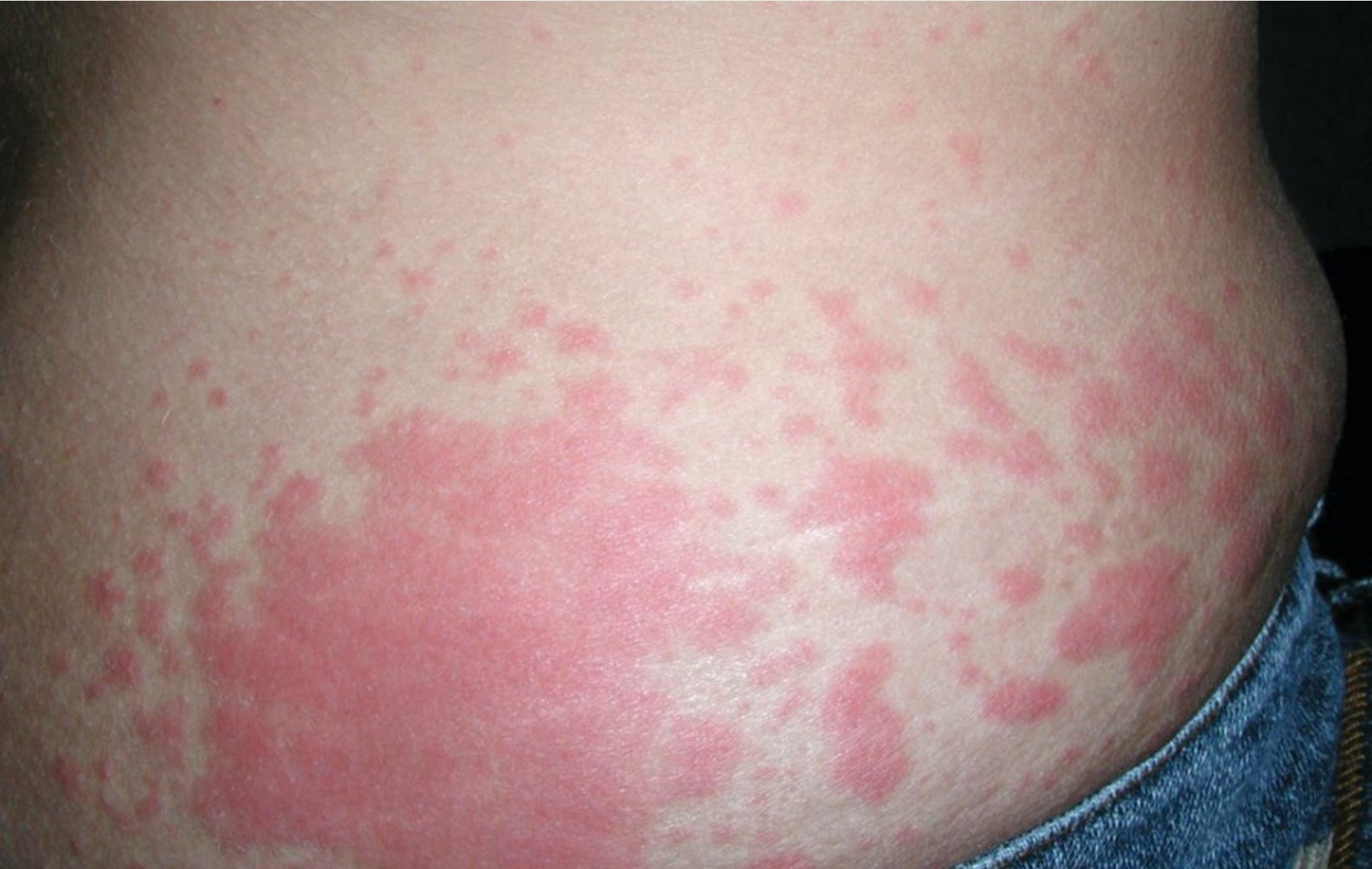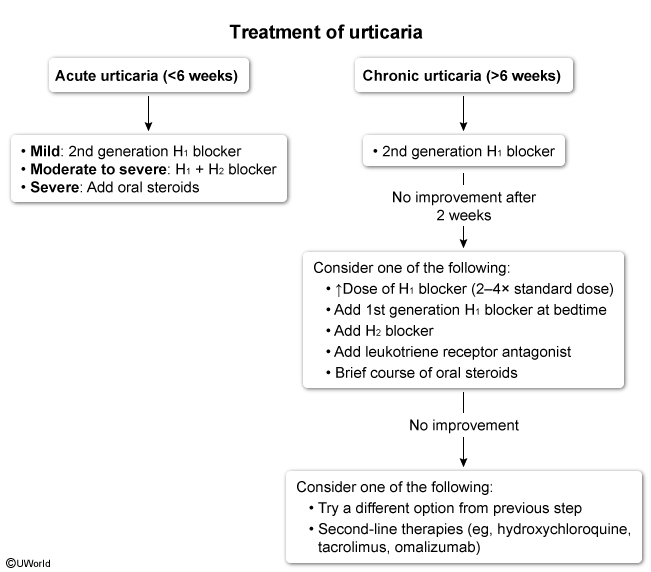Urticaria
- related: Dermatology
- tags: #dermatology
Urticaria (hives) are localized areas of edema caused by mast cell degranulation and the release of inflammatory proteins, including histamine, leukotrienes, complement, and prostaglandins. Urticaria is characterized by well-demarcated erythematous plaques ranging in size from 1 to 8 cm that appear quickly and resolve in a matter of hours (Figure 93). Individual lesions may be erythematous or white, often surrounded by a red halo, and have a variety of shapes including round, oval, annular, arciform, and serpiginous. The center of a lesion is typically blanchable pink or clear skin. These lesions are extremely pruritic and tend to appear on body sites with repetitive pressure or rubbing, such as the waistline and posterior neck. Although individual urticarial lesions should resolve in less than 24 hours, recurrent crops of hives may last for weeks. Most cases of urticaria resolve spontaneously, and the cause is never determined. If the episodes last for longer than 6 weeks, the condition is classified as chronic urticaria. If the individual urticarial lesions do not resolve after 24 hours, or if they are accompanied by systemic symptoms (joint pain, fever), urticarial vasculitis must be considered.
 Urticarial lesions on the waist characterized by small and large edematous and erythematous plaques of various shapes.
Urticarial lesions on the waist characterized by small and large edematous and erythematous plaques of various shapes.
The diagnosis of urticaria is clinical. Physical maneuvers that can help with diagnosis include circling lesions and seeing if they have resolved within 24 hours, and gently scratching uninvolved skin with the wooden end of tongue depressor to see if urticaria (not just redness) can be induced (dermatographism). The cause of urticaria is investigated primarily by history and physical examination; skin biopsies are not generally needed. Skin biopsy, however, is helpful in the diagnosis of urticarial vasculitis and should be considered in patients with painful lesions, systemic symptoms, or persistent individual lesions. Urticarial vasculitis more commonly presents with painful or burning lesions instead of pruritus and leave bruise-like changes when they resolve, which is atypical for usual urticaria. Patients with urticarial vasculitis often have an underlying autoimmune disease, most often lupus erythematosus, but even in the absence of an associated autoimmune disease, patients with urticarial vasculitis (particularly hypocomplementemic urticarial vasculitis) are at risk of multisystem disease, including nephritis.
Viral infection and medication reaction are the most common causes of acute urticaria in adults. Food-induced allergic reactions can be severe, and the most commonly implicated foods are shellfish, peanuts, and tree nuts. Infrequent but important causes include autoimmune thyroid disease and malignancies, particularly lymphoma. Physical urticaria is induced by a physical stimulus such as sunlight, sweating, physical pressure, vibration, water, or cold temperature.
Angioedema is a transient, localized subcutaneous or submucosal form of urticaria caused by extravasation of fluid into interstitial tissues. Angioedema may occur with or without urticaria and can be a component of anaphylaxis. Angioedema involving the face and airway is an emergency, and its initial treatment involves systemic epinephrine and glucocorticoids.
Hereditary angioedema, distinct from the more typical mast-cell associated angioedema, is caused by activation of the complement cascade due to lack of or dysfunction of C1 esterase inhibitor. Hereditary angioedema may cause sporadic localized edema involving the head and neck and is differentiated from mast cell-associated angioedema by the lack of typical urticarial lesions. Diagnosis is by testing for quantitative and functional levels of C1 esterase inhibitor and C4 complement levels.
Diagnostic workup for urticaria is not recommended unless history suggests a specific cause. If symptoms persist, laboratory tests, including a complete blood count with differential, urinalysis, erythrocyte sedimentation rate or C-reactive protein, thyroid-stimulating hormone, and liver chemistry tests, can be considered. If associated with systemic symptoms or suspicion of urticarial vasculitis, testing directed by the findings should be considered.
